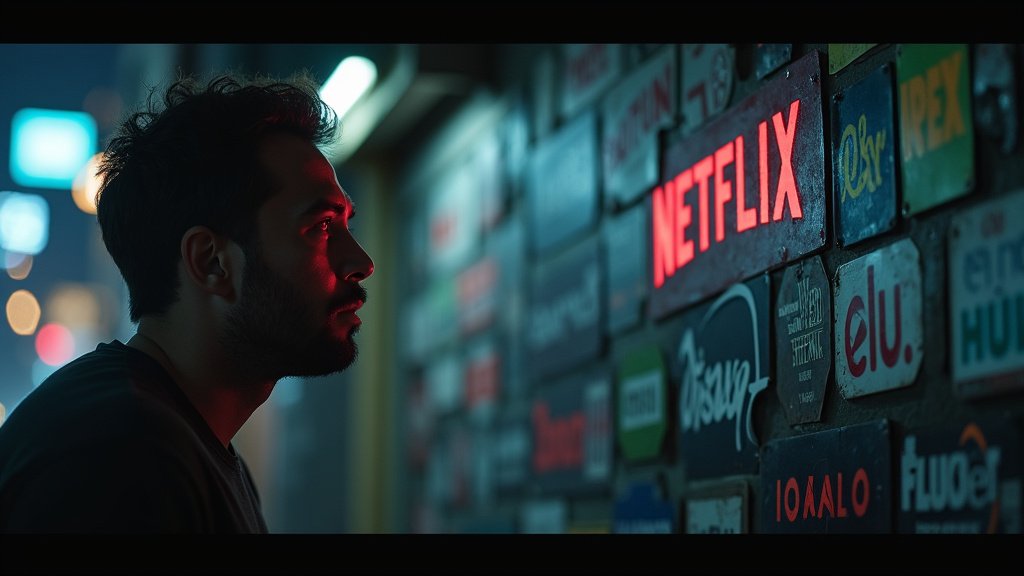The era of inexpensive streaming is officially over as Streaming Prices Rising impacts households nationwide. Prices for major streaming services are on the rise, with many platforms implementing significant increases in recent months and years. This trend is forcing consumers to re-evaluate their entertainment budgets and adjust their viewing habits, contributing to the growing concern about Streaming Prices Rising.
The Perfect Storm: Why Streaming Prices Are Climbing
Several factors are contributing to this surge in streaming service costs. A primary driver is the content arms race. Streaming giants are spending billions of dollars to license and produce exclusive, high-budget shows and movies. Intense bidding wars for popular franchises and original series drive up these costs, which are ultimately passed on to subscribers. For instance, Netflix’s content spending has dramatically increased over the past decade, a clear indicator of the increase in streaming prices.
Beyond content acquisition, streaming platforms are grappling with slowing subscriber growth in mature markets. After years of rapid expansion, many services are finding it harder to attract new users. To maintain profitability and appease investors who demand steady revenue, companies are shifting their focus from subscriber count to sustainable margins. Price hikes have become the most straightforward method to achieve this, further pushing Streaming Prices Rising.
Inflation also plays a significant role. Like many industries, streaming services face rising operational costs for technology, bandwidth, and infrastructure. This economic pressure, coupled with the need to compensate for declining revenue from traditional pay TV channels, compels media companies to boost their streaming revenue. The continuous streaming subscription hikes are a direct consequence of these combined pressures.
The Shift from Traditional TV to Streaming and Rising Costs
The landscape of television consumption has undergone a profound transformation. Traditional pay-TV services have seen a significant decline in popularity, with only a fraction of U.S. households relying solely on cable or satellite for entertainment. Viewers are increasingly prioritizing flexibility and on-demand access, which streaming platforms provide. This shift has forced legacy media companies to invest heavily in streaming to offset losses from their traditional businesses. Companies like Warner Bros. Discovery are even closing traditional TV networks as eyeballs and investments move online, underscoring the evolving streaming industry economics.
Strategies to Boost Profitability Amid Streaming Prices Rising
In response to these economic pressures, streaming services are employing various strategies:
* Price Increases: As detailed, this is the most visible strategy. Major players like Netflix, Disney+, Hulu, Max, and Apple TV+ have all seen price hikes in recent years. For example, HBO Max (now Max) recently increased its standard subscription by $1.50 to $18.49 a month, a 23% jump since its launch five years prior. This is a prime example of Streaming Prices Rising.
* Ad-Supported Tiers: Many services now offer lower-priced tiers with advertisements. These plans generate revenue from both subscribers and advertisers, while also appealing to budget-conscious consumers. Nearly half of U.S. internet households are now expected to use free ad supported streaming services, reflecting new consumer streaming habits.
* Password Sharing Crackdowns: Services like Netflix and Disney+ are actively combating password sharing crackdown to convert freeloading viewers into paying subscribers. This move has generated billions in new revenue for some platforms, helping to offset the impact of Streaming Prices Rising for paying customers.
* Bundling: Companies are offering bundled packages of services at a discount to retain subscribers and increase revenue.
Consumer Impact and the Future of Streaming
These price increases mean the era of cheap streaming is over. The average price for subscriptions to the top 10 paid streaming services in the U.S. has increased by 12% this year alone, following consistent double-digit annual increases since 2022. Consumers are feeling the pinch, with the total cost of multiple subscriptions quickly adding up, sometimes exceeding the cost of traditional cable. The impact of Streaming Prices Rising is undeniable.
This evolving economic landscape is leading to new consumer streaming habits. Many viewers are adopting a “rotation strategy,” subscribing to a few services at a time and cycling through them based on content releases to save money. Others are being more selective, cancelling underused subscriptions to manage their budgets.
The industry is at a crossroads. While streaming has revolutionized how we consume entertainment, the business models are maturing, and profitability is now paramount. The future of streaming will likely involve a delicate balance between offering compelling content and maintaining affordability for consumers. As prices trending upwards, viewers in places like Los Angeles and across the nation are faced with tougher choices about how they access their favorite movies and tv news, all while grappling with the reality of Streaming Prices Rising.





